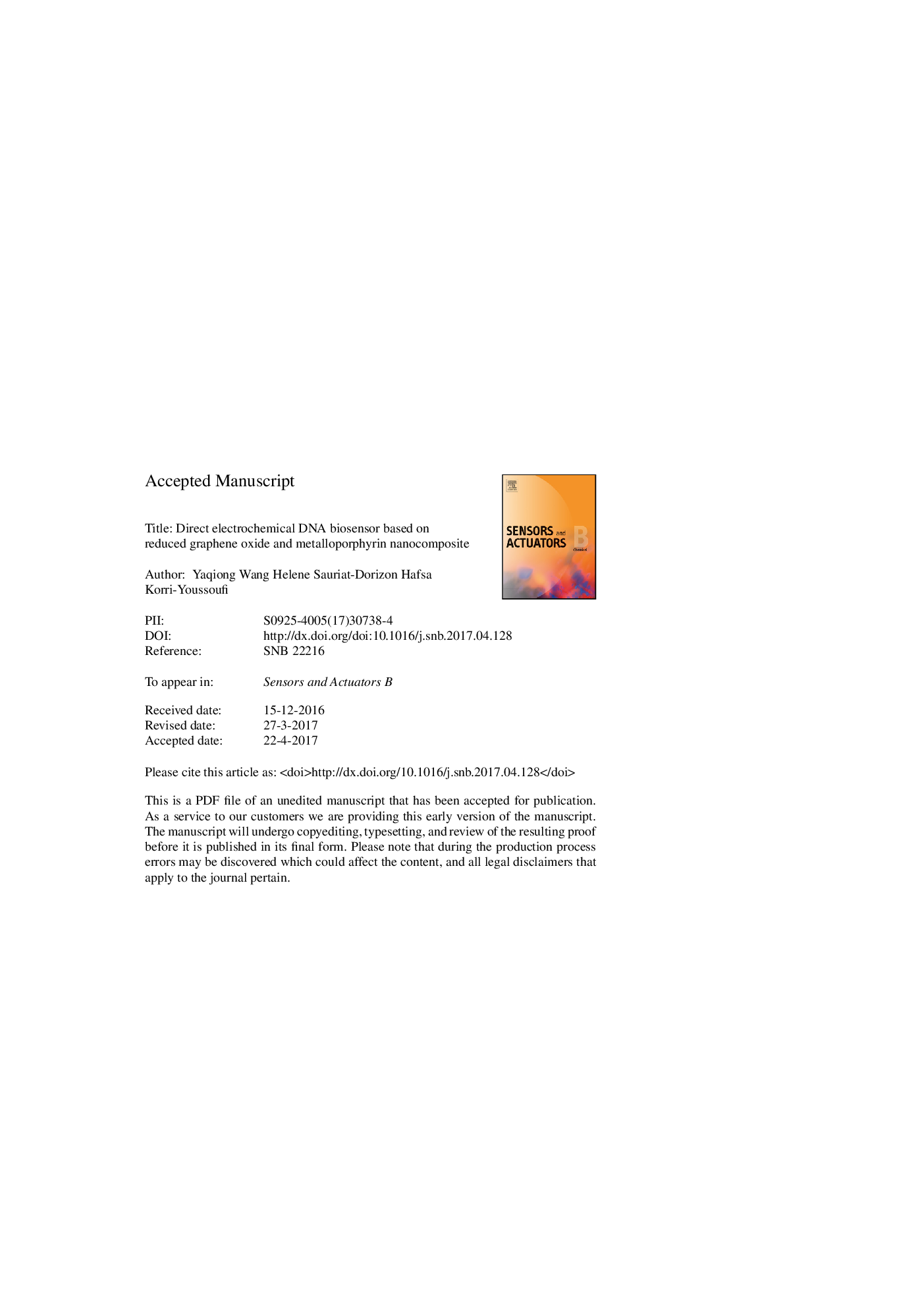| کد مقاله | کد نشریه | سال انتشار | مقاله انگلیسی | نسخه تمام متن |
|---|---|---|---|---|
| 5008842 | 1462040 | 2017 | 27 صفحه PDF | دانلود رایگان |
عنوان انگلیسی مقاله ISI
Direct electrochemical DNA biosensor based on reduced graphene oxide and metalloporphyrin nanocomposite
دانلود مقاله + سفارش ترجمه
دانلود مقاله ISI انگلیسی
رایگان برای ایرانیان
کلمات کلیدی
موضوعات مرتبط
مهندسی و علوم پایه
شیمی
شیمی آنالیزی یا شیمی تجزیه
پیش نمایش صفحه اول مقاله

چکیده انگلیسی
A novel electrochemical DNA sensor based on self-assembled nanocomposite of a Ï-conjugated structure of reduced graphene oxide (RGO) and a modified manganese (III) tetraphenylporphyrin (MnTPP) was described. The composite MnTPP/RGO was formed through ÏâÏ stacking interactions between aromatic rings of graphene sheets and porphyrin macrocycle. Porphyrin molecules are versatile compounds that are easily functionalized with numerous reactive groups and also capable of incorporating many redox metals for electrochemical characterization. In this work, we synthesized the 5-[4-(4-carboxypropanoxy)phenyl]-10,15,20-triphenylporphyrin functionalized with a carboxylic group designed for covalent attachment of 5â²-amino single-strand DNA through stable amide link. The MnTPP/RGO platform was characterized by Fourier Transform infrared spectroscopy (FT-IR), UV-visible spectroscopy and electrochemical methods. We demonstrated that the two-dimensional structure and conjugated system of graphene allowed strong interactions of metalloporphyrins and their immobilization on the surface of graphene without loss structural and conductive properties of the graphene. Electrochemical investigations performed by square wave voltammetry (SWV) and electrochemical impedance spectroscopy (EIS) provided that the RGO possessed excellent conductivity and facilitated the electron transfer of redox species. DNA immobilization and hybridization with complementary sequences lead to the change of electrochemical MnTPP/RGO properties. EIS demonstrated an increase of impedance after DNA probe grafting and hybridization. A detection limit of 6 Ã 10â14 M has been calculated and a dynamic range of 100 aM to 10 pM has been shown. Selectivity of the biosensors has been investigated in presence of non-complementary and one-mismatched DNA sequence.
ناشر
Database: Elsevier - ScienceDirect (ساینس دایرکت)
Journal: Sensors and Actuators B: Chemical - Volume 251, November 2017, Pages 40-48
Journal: Sensors and Actuators B: Chemical - Volume 251, November 2017, Pages 40-48
نویسندگان
Yaqiong Wang, Helene Sauriat-Dorizon, Hafsa Korri-Youssoufi,